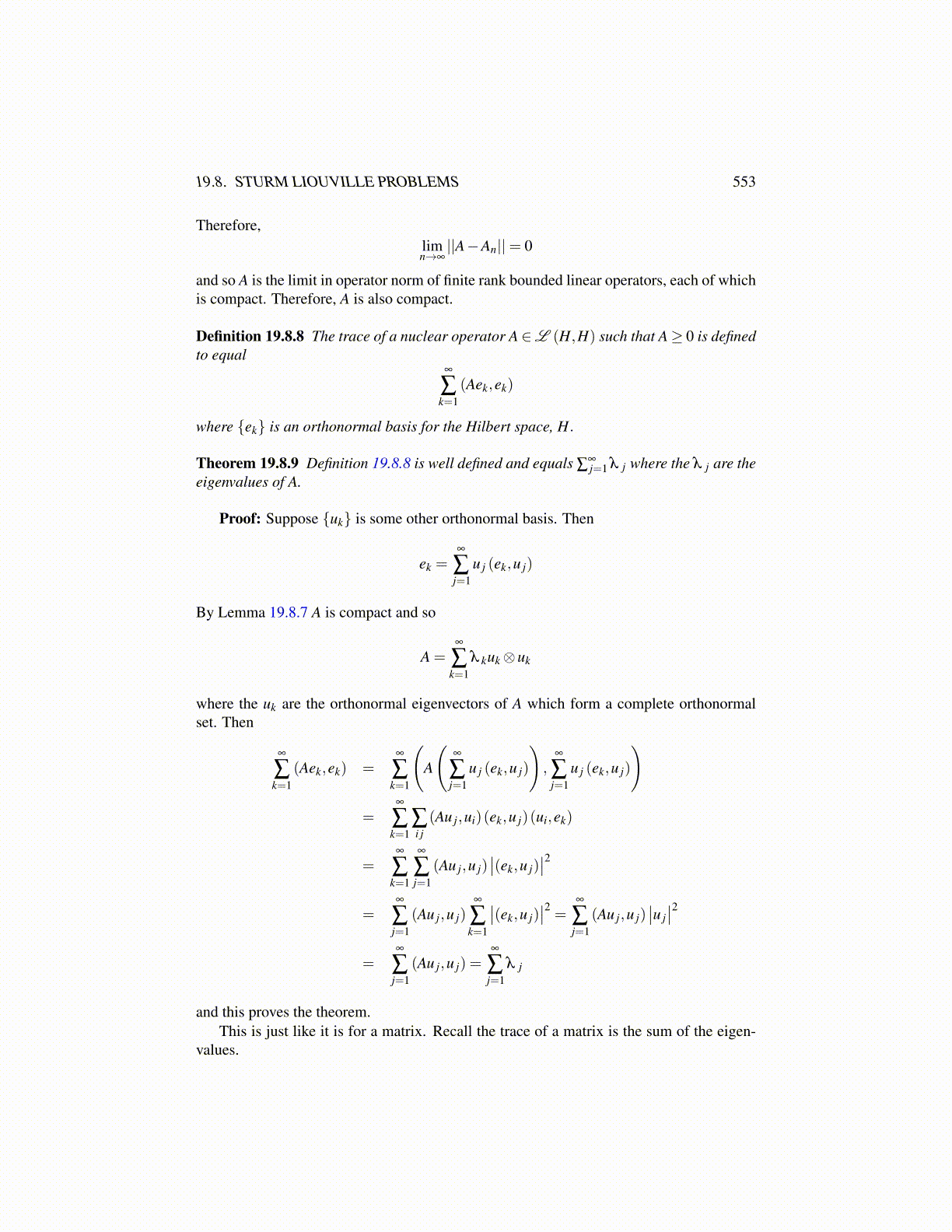
19.8. STURM LIOUVILLE PROBLEMS 553
Therefore,limn→∞||A−An||= 0
and so A is the limit in operator norm of finite rank bounded linear operators, each of whichis compact. Therefore, A is also compact.
Definition 19.8.8 The trace of a nuclear operator A ∈L (H,H) such that A≥ 0 is definedto equal
∞
∑k=1
(Aek,ek)
where {ek} is an orthonormal basis for the Hilbert space, H.
Theorem 19.8.9 Definition 19.8.8 is well defined and equals ∑∞j=1 λ j where the λ j are the
eigenvalues of A.
Proof: Suppose {uk} is some other orthonormal basis. Then
ek =∞
∑j=1
u j (ek,u j)
By Lemma 19.8.7 A is compact and so
A =∞
∑k=1
λ kuk⊗uk
where the uk are the orthonormal eigenvectors of A which form a complete orthonormalset. Then
∞
∑k=1
(Aek,ek) =∞
∑k=1
(A
(∞
∑j=1
u j (ek,u j)
),
∞
∑j=1
u j (ek,u j)
)
=∞
∑k=1
∑i j(Au j,ui)(ek,u j)(ui,ek)
=∞
∑k=1
∞
∑j=1
(Au j,u j)∣∣(ek,u j)
∣∣2=
∞
∑j=1
(Au j,u j)∞
∑k=1
∣∣(ek,u j)∣∣2 = ∞
∑j=1
(Au j,u j)∣∣u j∣∣2
=∞
∑j=1
(Au j,u j) =∞
∑j=1
λ j
and this proves the theorem.This is just like it is for a matrix. Recall the trace of a matrix is the sum of the eigen-
values.